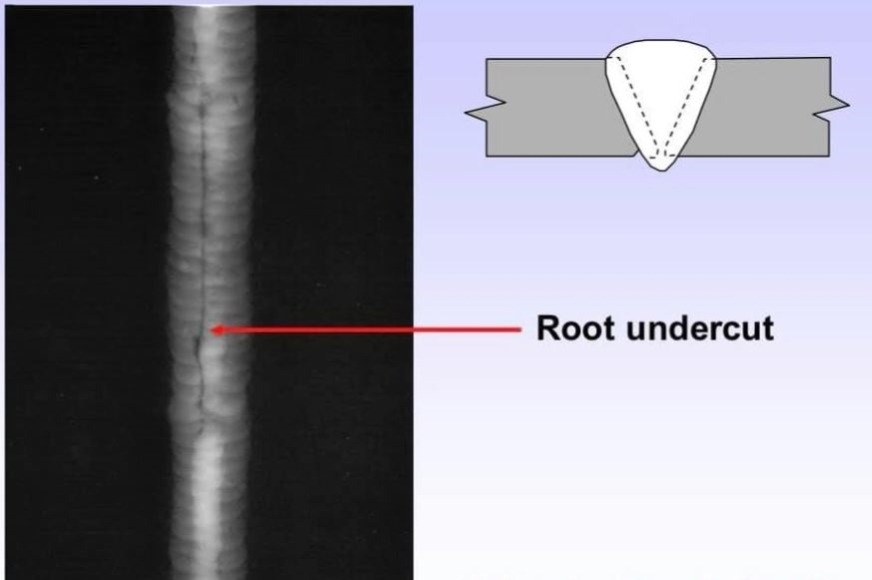Best Overview to Preventing Weld Undercut: Tips and Techniques
Best Overview to Preventing Weld Undercut: Tips and Techniques
Blog Article
Understanding the Art of Welding: Exactly How to Prevent Undercut Welding Issues for Flawless Fabrication Outcomes
By understanding the root triggers of undercut welding and carrying out effective strategies to stop it, welders can raise their craft to brand-new levels of quality. In the pursuit of perfect construction outcomes, grasping the art of welding to stay clear of undercut concerns is not simply an ability but a need for those aiming for excellence in their job.
Recognizing Undercut Welding

To prevent undercut welding, welders should guarantee proper welding criteria, such as adjusting the current, voltage, travel speed, and keeping the proper electrode angle. By understanding the causes of undercut welding and carrying out precautionary steps, welders can achieve high-quality, structurally audio welds.
Reasons For Undercut in Welding
Understanding the variables that add to damage in welding is essential for welders to generate high-quality, structurally sound welds. When the weld steel does not correctly load the groove formed in between the base metal and the previously transferred weld metal, damaging happens. Numerous elements can cause undercut in welding. One usual cause is extreme heat input. Welding at heats for prolonged durations can lead to the base metal thawing greater than preferred, causing undercut. Poor welding present or wrong welding rate can likewise contribute to damage. Inadequate current may not offer sufficient heat to melt the base and filler steels adequately, while extreme speed can prevent proper combination, triggering undercut. Additionally, inappropriate electrode angles or inaccurate lantern adjustment techniques can create areas of reduced weld steel deposition, advertising undercut. Recognizing these reasons and carrying out proper welding strategies can aid prevent undercutting problems, making certain resilient and strong welds.
Methods to stop Undercutting

To alleviate the risk of undercutting in welding, welders can employ tactical welding strategies targeted at boosting the top quality and honesty of the weld joints. One efficient approach is to change the welding criteria, such as voltage, existing, and travel speed, to make sure appropriate warmth input and deposition. Preserving an ideal electrode angle and ensuring consistent travel speed can additionally assist prevent undercut. In addition, utilizing the correct welding strategy for the certain joint configuration, such as weave or stringer grains, can contribute to decreasing damaging. Preventing weld undercut.
Utilizing back-step welding strategies and managing the weld bead account can also help distribute warmth evenly and reduce the threat of undercut. Regular evaluation of the weld joint throughout and after welding, as well as implementing quality assurance procedures, can aid in resolving and discovering undercutting issues immediately.
Relevance of Correct Welding Specifications
Picking and maintaining ideal welding specifications is essential Going Here for achieving successful welds with very little issues. Welding criteria refer to variables such as voltage, existing, travel speed, electrode angle, and shielding gas circulation rate that straight impact the welding process. These parameters should be carefully changed based upon the sort of material being bonded, its density, and the welding method employed.
Correct welding specifications make certain the correct amount of warmth is put on thaw the base steels and filler product evenly. If the specifications are established expensive, it can cause too much heat input, triggering spatter, burn-through, or distortion. On the various other hand, if the criteria are also reduced, incomplete fusion, lack of infiltration, or undercutting might happen.
High Quality Guarantee in Welding Procedures

Conclusion
Finally, understanding the art of welding requires a comprehensive understanding of undercut welding, its reasons, and methods to stop it. By making certain correct welding criteria and executing quality control practices, remarkable construction results can be accomplished. It is necessary for welders to constantly strive for excellence in their welding operations to prevent undercut concerns and produce top quality welds.
Undercut welding, an usual problem in welding procedures, occurs when the weld metal does not effectively fill up the groove and leaves a groove or clinical depression along the welded joint.To protect against undercut go right here welding, welders should make sure correct welding specifications, such as changing the existing, voltage, travel rate, and preserving the correct electrode angle. Insufficient welding current or inaccurate welding speed can likewise add to damage.To mitigate the threat of damaging in welding, welders can employ tactical welding techniques intended at enhancing the top quality and integrity of the weld joints.In verdict, grasping the art of welding needs a thorough understanding of undercut welding, its reasons, and techniques to prevent it.
Report this page